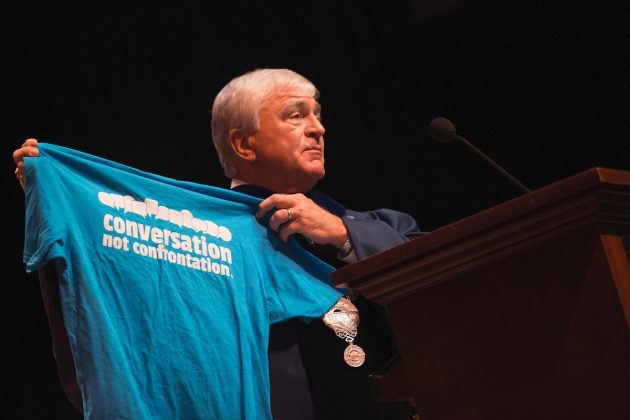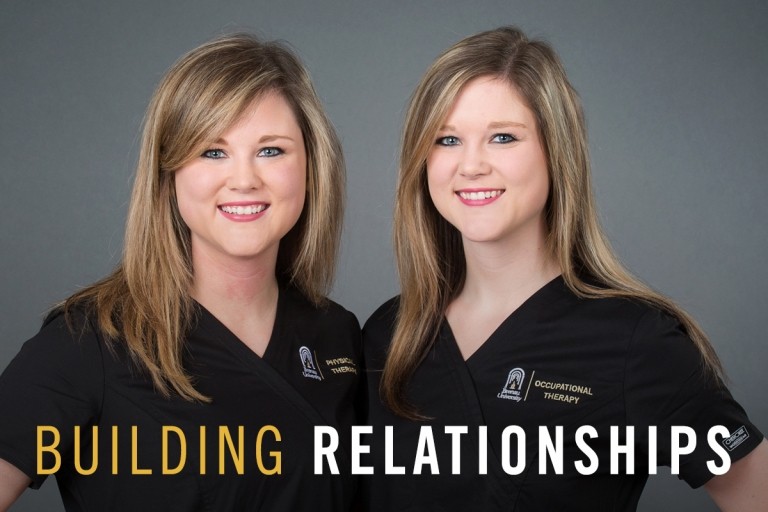Conversation not Confrontation
P
erhaps you have seen the television commercial that features a middle-aged man wearing lederhosen who grew up thinking he was of Bavarian ancestry only to discover through ancestry.com that he needed to change into a kilt, because he was actually of Scottish descent. The point is that today – with advanced genetic testing and a plethora of ancestry websites – we can look deeper and more accurately into our pasts than ever before. We see farther into our histories than some care to admit.
Brenau should have an unduplicated headcount in graduate and undergraduate preprofessional programs this year of more than 3,800 enrolled students – all unique individuals. Of the 850 counted as Women’s College undergraduates, for example, dozens could actually be occupational therapy graduate students and about 30 or so are actually men! They participate in theater, dance and health care undergraduate programs. There is also a young man among the cohort of 18 early childhood education majors from Anhui Normal University who will complete the last two years of their undergraduate studies with us. About 30 percent of the total student body – and an even higher percentage in just the Women’s College – are African American. Growing numbers of our students are military veterans, and some still are on active duty while they are enrolled. And about 70 percent of our entire student body is female even though men are encouraged in all of Brenau’s programs outside of the Women’s College.
These positive quantitative indicators demonstrate unequivocally that the Brenau University family embraces diverse cultures, global citizenship, American patriotism, diverse religious traditions, the wide spectrum of America’s racial origins and conversations about how we can become and represent voices of inclusion and tolerance. In my perfect world, Brenau thrives in enrollment while our graduates thrive as personally and professionally fulfilled leaders in our society. Regardless of where our ancestors originated or how they affect our appreciation of heritage, people’s life choices and passions can only be better and bigger if tempered by a good dose of reality.
One special aspect of Southern history is clearly evident as I scan the pages of a rare book that I own, The Census of the United States as of 1850. That factual and documented aspect is the mixed-race makeup of our country even as early as 1850, a point in time only 75 years or so after the American Revolution. This census data often describes populations of states divided under “Whites, Blacks and Mulattos (mixed racial parentage).” Sometimes, the data combines “Black and Mulatto” populations as “Colored.”
I point this out because there were about 26 million people reported as residents of the United States in 1850. Almost 4 million of these residents were recorded as slaves, with another 450,000+ classified as “Free Colored” and the two groups combined called “Colored.” A total of 405,000 “Colored” residents were mulatto. So, both free and slave populations – of mixed or multiracial backgrounds – represented slightly more than 19 percent of the national population a decade before the beginning of the Civil War that ended slavery in our country.
What does that mean today, 151 years after the elimination of slavery in the United States? As we stride deeper into the 21st century, the multiracial segment of our population has grown exponentially. It now includes peoples such as Native American, Hispanic/Latino, Asian, Pacific Islanders and others. These multiracial groups combined demographically represent a majority of the more than 320 million people who live in the United States today.
A quilted mosaic
You know what else has been disclosed by the human genome projects and research? Considerable portions of the current global population that are classified as “white” are really a quilted mosaic of backgrounds – like the man in the commercial who switched from lederhosen to kilt. They are interwoven from strands of many races and cultures. It simply looks to me as if most members of the 21st century gene pool are in one way or another related!
That is what has been so disturbing about the tone and topic of rhetoric coming from all across the political spectrum in democracies around the world, including the United States. No political group in today’s world has a monopoly on hate speech. So, even disregarding the imperative of human compassion and respect, what is the point or logic of racial and social prejudice? Such feelings certainly disappear when we need to unite against a common foe, like ISIS. Shouldn’t we also unite against the common foe of political rhetoric threatening the fabric of our “common defense” or “domestic tranquility?”
That is why I invite you all to take part in celebrating the strength of the diversity of our Brenau family by embracing and participating in the Conversation not Confrontation focus for the 2016-17 academic year – and, indeed, for the future. No matter how offensive or argumentative someone else might be, exert control of your part in that conversation as you “love deeply, fear nothing, hate never; to enjoy the freedom which comes from knowledge of the truth … and serenely confident of the limitless reaches of human achievement.”
Remember, the future is in good hands – actually the best hands. It is in your hands. Participate in the conversation. Learn from others. Teach others. Talk to each other, not at each other. Move closer, not farther away.
I am proud to be part of Brenau. I am confident that you share this feeling of community, of family.
Ed L. Schrader, Ph.D.
President
Brenau University



Well said, Dr. Schrader. The answers to our societal problems are in the solutions we invent and implement together as we create a better world. That can’t happen without open and respectful discourse. Barb
Excellent tie into the Brenau Ideal. And further fits with “To enjoy that freedom which comes from knowledge of the “Truth”.
Best, Lynn